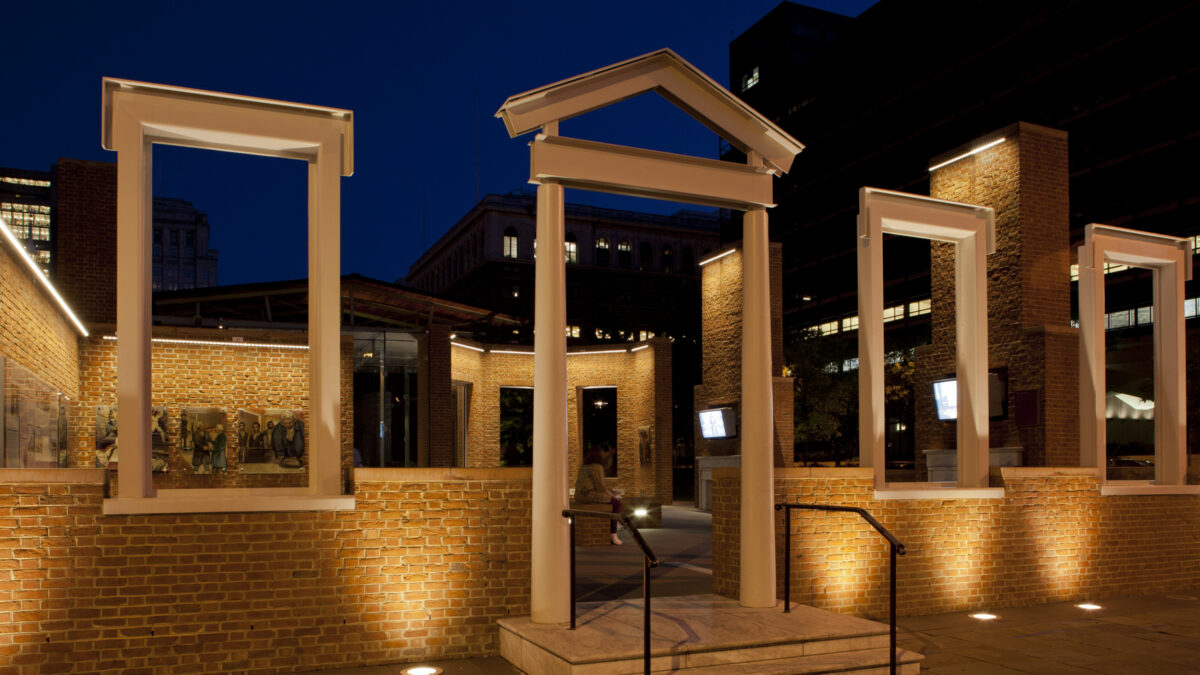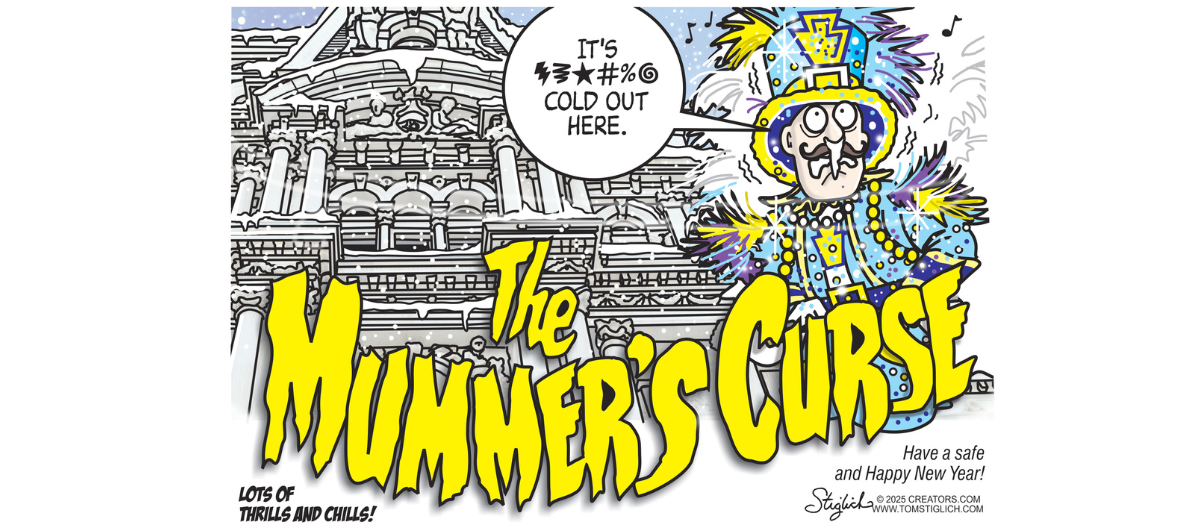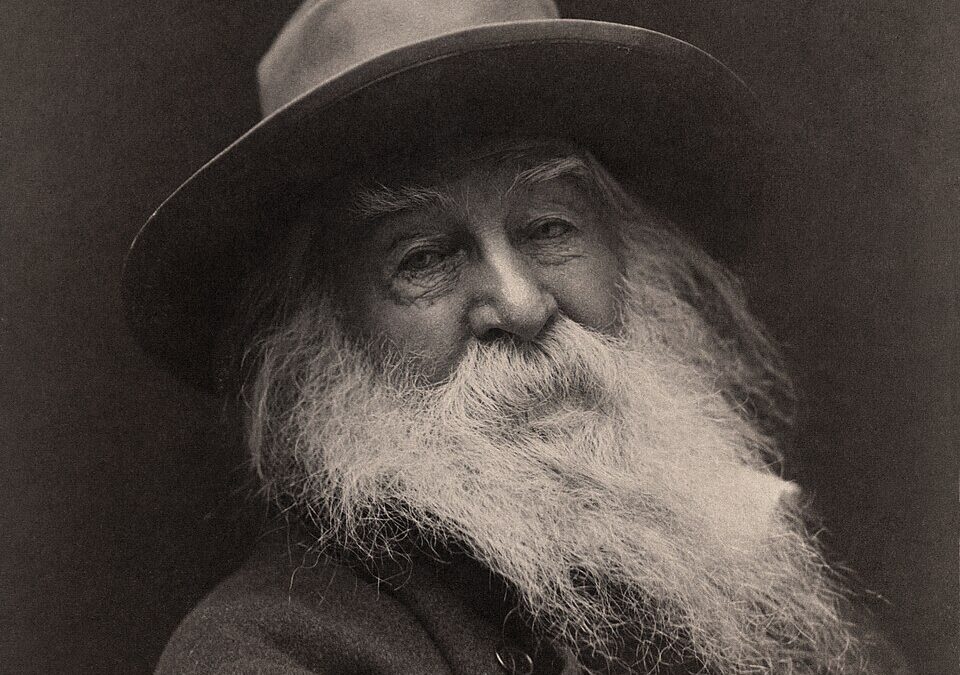Thom Nickels: The AIDS epidemic in Philadelphia, forty years later
When AIDS became a full-blown epidemic in 1981-82, times were so frightening I sometimes wished that I could fall asleep and then, like Rip Van Winkle, wake up when it was over. Since that could never be, I had to deal with the fact that a mysterious virus was killing gay men, and that my own life was at risk. The fact that there were still more questions than answers regarding the virus meant that gay men had to question every form of intimacy, be it saliva exchange during a simple kiss to more complicated forms of personal interaction.
I first heard of AIDS on a street in Center City from Henry, an RN who sometimes cruised city streets dressed as a drag queen or a Catholic nun. Henry, his eyes as big as saucers, said, “They just found out that gay sex causes the brain to rot.” The look in his eyes was one of sheer terror but I did not believe him. At the time we were looking into a shop window at 13th and Walnut Streets after celebrating a boy’s night out that ended with a sumptuous omelet at one of the local greasy spoons. I assumed the pronouncement was just another one of Henry’s sick jokes.
Henry told me he read about the new disease in The New England Journal of Medicine. This was some weeks before the iconic New York Times article about a strange gay cancer.
Those early days for most gay men were quite confusing. Many of us were still basking in the libertine shadow of the 1970s. It was a naughty and undisciplined time when the worst that could happen to a fellow was a case of the clap or syphilis, but even these misfortunes were easily fixed with a shot of penicillin — and a band-aid, of course, in case the test needle bruised the skin.
The baths in those days had health clinic nights when medical personnel offered free blood tests for STDs. It was standard procedure for customers to fly in and out of clinic nights, then don a towel and join in on the Satyricon fantasy. Some years before, in the city of Boston — where I came out at age eighteen — I found the alchemists cure for years of teenage sexual repression: the gay bar, then an institution often raided by the police but at the same time frequented, in Boston at least, by the likes of Rudolf Nureyev, Robert Mitchum, and even a very drunk Judy Garland.
In Boston, I’d take occasional Greyhound bus trips to Manhattan to the ritzy Continental baths where a brassy woman entertainer — a young unknown by the name of Bette Midler — interrupted the action with a lounge act that would soon go viral. I remember Bette Midler as a blob-like figure with a microphone as Barry Manilow played the piano. Meanwhile, back in Boston in the Brahman townhouses of the well-connected, there was the occasional public orgy, an after hours event that would be advertised by loud calls just before the bars closed at 2 AM:
“Orgy at 72 Pickney Street, Beacon Hill!”
You can’t make this stuff up, as they say.
These were not BYOB events but, as they say, living life to the fullest, tapping into what poet Arthur Rimbaud called the “derangement of the senses,” even if the one orgy I attended was only as an observer — today I would compare that observer status to being an interfaith guest at the Second Vatican Council.
At this particular party, I was sitting off to the side on a sofa beside a young Alan Helms, then a twenty-six-year-old New York ex-actor turned Boston University English professor, who would go on to write a well known scandalous memoir of the period, Young Man from the Provinces, a book praised by Gore Vidal, Terrence McNally and Edmund White. On page 149, Helms relates how he met me at this orgy, referring to yours truly as a sweet young painter with a terrible, terrible case of acne. Ouch! As it happened, I left the orgy not at all impressed by the pile of twisted, discombobulated bodies, in which nobody apparently left satisfied or happy.
When it was confirmed that the new disease was caused by sex, I cut and slashed abuses in my romantic life with the vehemence of a Milton Freedman or an Alan Greenspan offering cuts to federal programs. The discipline did me good; the problem, however, were reports that said the disease had a long latency period, meaning that what I did five years ago could conceivably come back to haunt. Marks of the new disease could appear overnight: while stepping out of the shower or putting on a pair of socks one might notice a pimple or a bruise with the medical name, Kaposi’s sarcoma.
These were dreadful, scary times.
My friend, Steve McPartland, was in his mid-twenties and on the verge of what probably would have been a successful ice skating career when he broke his back on the ice. I met Steve while working at Chester County Hospital when I lived in West Chester. Steve had just discovered that he was gay and wanted someone to talk to, so I introduced him to my partner and we three became friends. Not many years later, Steve became one of the first men in Philadelphia to contract AIDS. Reality hit home in a big way for me when I saw a picture of him in a hospital bed on the front page of the Philadelphia Gay News.
The year was 1983, well before there was a test to detect the virus or even a drug to ward off secondary infections of the immune system. It took Steve about two years to die. Although he eventually left the hospital, he became a common sight on the streets of Center City, hobbling along on his crutches, an AIDS buddy by his side. His slow demise was difficult to process. I last saw him on Spruce Street one summer still on crutches eating a vanilla ice cream cone. Even then I had to wonder as I stood talking to him, “If I lean over and take a lick, will I become infected myself?”
Almost immediately after Steve’s death, the names of the sick and deceased in the gay press seemed to quadruple. We were now in the grip of a plague, first known as Gay Cancer, then GRID (Gay Related Immune Deficiency), and finally AIDS.
Albert Camus’ novel The Plague had nothing on this thing. A disease caused by sex that eats the brain and that also puts ugly marks on your body was now causing some people to suggest that AIDS patients be quarantined. What would this mean, I wondered: would all gay men be forced into medical camps?
Fast forward thirty years or so when I found myself in a middle row seat on a US Airways flight from Philadelphia to San Francisco. I’m thinking of Steve while reviewing a program booklet entitled The Evolution of HIV/AIDS Therapies, a short panel discussion due to take place at the Gordon and Betty Moore Foundation in Palo Alto, California.
The seminar focused on the progress achieved in HIV therapies, as well as the global challenges still to be met. I was traveling as a journalist with two representatives of the event’s co-sponsor, what was then known as the Philadelphia’s Chemical Heritage Foundation, an independent nonprofit dedicated to chemistry and to helping science find ways to help meet contemporary social challenges. I don’t know whether my two CHF colleagues on board had friends who died of HIV/AIDS. I didn’t ask them, my head being too full of the faces of other buddies who died of the disease, like Dr. William H. Miller who was a Harvard med student when I met him in Harvard Square’s Cambridge Common.
Bill was from Asheville, North Carolina and was attending Harvard Med with the aim of going into general practice. We met years before AIDS came on the scene when we were both twenty years old. Boys, basically. Later, Bill would fill me in on the life of a Harvard med student and tell me stories like how his personal lab dissection shark fell from a shelf into his lunch, ruining a good liverwurst sandwich. He also told me how he was planning to move in with a heterosexual couple in Boston’s Roxbury section.
A little later, he left for Tacoma, Washington, to do his residency program. I never saw him again although for years Bill and I kept in touch through letters and postcards. He’d send me pictures of his exotic travels to Vienna, Paris, or Central America. After that we lost touch, not an unusual situation when friends take divergent paths. But years later, in a Hitchockian twist, I met an elderly Seattle physician through a friend of a friend and on a whim, asked him if he had ever heard of a North Carolina-born physician named Dr. Miller in the Tacoma area. The Seattle physician told me that he’d been a friend of Bill’s for years and had even gone to parties in Bill’s Washington state forest cabin, but that, tragically, Bill had died of AIDS some nine years before.
Gay but in the closet, the Seattle MD was a sort of society physician, tall with white hair, very patrician-like whose company women found especially compelling. He told me more about Bill than I needed to know after which he went on to explain a few things about himself, one of them being the time he gave a physical examination to Robert F. Kennedy (Sr.) when the latter campaigned for president.
Kennedy took sick in Seattle and needed a doctor. “Robert Kennedy was the nastiest patient I’ve ever examined,” my physician friend told me. “A nasty man, however when he took off his shirt I noticed that he had pure white chest hair while not a single strand of the hair on his head was white. That’s when I knew that he would not live long” Although there’s zero medical logic to such an equation, the Seattle doc insisted that every patient he’d examined who had white chest hair but normal head hair had died shortly after he gave them a physical examination.
It was true, but not in the way the doctor expected: Kennedy was killed in Los Angeles’s Ambassador Hotel three weeks later.
I thought that I had processed the deaths of Bill and Steve long ago, but here I was at 30,000 feet going through an emotional rolodex of sorts, as if the word “evolution” in the program title had somehow got me thinking about the past. Whatever it was, I knew there would be more memories once I was front and center at the Moore Foundation to hear Gregg H. Alton and Norbert W. Bischofberger, both from Gilead Sciences, and Sir Richard G.A. Feachem and Paul A. Volberding, from the University of California..
At the conference, Volberding jolted the audience with recollections about walking around San Francisco General Hospital in the early days and seeing the first person with Kaposi’s sarcoma. “It was literally the start of the epidemic,” he says. “It took a while before we realized it was an infectious disease, but once we did there was terror because we didn’t know how it was transmitted. So there was a sense of personal risk in dealing with the patients.”
It was a common practice for men with AIDS to cover their KS spots with Clearasil tubes or Cover Girl makeup sticks but often the blemish scabs were so pronounced, it was impossible to cover them. Viral infections like pneumonia, herpes and KS were secondary infections and they could only be treated with drugs that addressed these secondary symptoms, but treating the immune system as a whole went unattended, meaning that the infections came back until they killed the patient.
KS was particularly devastating in that it was external, a blatant Scarlet Letter that told the world that you had the plague. Prior to AIDS, KS was mostly a skin condition seen in the very old Eastern European or Mediterranean men. First described in 1872 by a Hungarian dermatologist named Moritz Kaposi, non-AIDS related KS was seen as being caused or affected by infrequent bathing, or as a condition that hit people with a history of asthma and allergies.
In the early days of the epidemic, health paranoia affected families and destroyed relationships. In Philadelphia and elsewhere, many straight people no longer invited their gay friends to dinner, and some stopped seeing them altogether. Relatives stopped kissing their gay sons or siblings on the mouth, and even had worried looks on their faces when they kissed them on the cheeks, as if the virus hibernated in pores or blew out of the nostrils in the nose. City dentists began to be wary of their gay patients and imagined weight loss when there was none. “You look awfully thin,” my dentist said to me several times, “Are you sure you are alright? Are you sure? Really? Are you sure?”
This Q and A went on for several years. Many times I felt he wanted me to say, “No, I am not alright, I am dying right before your eyes,” so that he could tell me to go find another dentist. Because relatives and straight friends were always imagining weight loss when there was none, even these simple questions led to nights of unnecessary worry and panic because of the “what if” factor.
Then there was the mosquito factor. One summer, the woman instructor of my evening aerobics class, agonized for weeks over whether mosquitos can transfer the tainted blood of AIDS patients into the bloodstreams of healthy people as they fly from person to person. Not an unreasonable fear, I suppose, but her fear was so profound that she stopped going out dancing with me in the gay discos, where there were no mosquitos but where dance floor perspiration might be a cause for concern.
Discrimination and fear even reached into the corridors of hospitals, especially Ward 54 in San Francisco General, the so-called AIDS wing, where so many young men died. Volberding recalls:
“We heard horrible stories of patients who had to get up and change their own beds during the night, the night sweats, and would have to go beg for Tylenol from the nursing station. Not to say that that was common, but it happened often enough that we found ourselves doing a lot of work putting out those fliers. It just became clearer and clearer that this was a very complex disease, and we were going to see more of it.”
“People went blind,” Volberding continued, “and were unable to care for themselves, while caught in the middle was the social issue and the fact that they were gay and families would often descend on the deathbed and try to take over the care from the lover.” How many times did I hear of families preventing the partners of dying sons from visiting them in the hospital? The stories were endless, of men who had spent years together suddenly told that their relationships didn’t matter.
In the 1980s I had a biweekly column in Philadelphia’s Welcomat, where I wrote about gay issues, both personal and political, for a straight audience. When fellow Welcomat writer, Patrick Hazzard, wrote a piece suggesting that gay men brought the disease on themselves, ACT UP raided the offices of then editor Dan Rottenberg and demanded an editorial retraction or that Hazzard be fired. When none of those things happened — the philosophy of the Welcomat was to publish a variety of opinions on different issues — ACT UP called for a boycott of the newspaper and suggested that all gay Welcomat writers resign in protest.
One food writer did resign but I did not. Because I did not resign, minor trouble followed, such as getting shoved by activists in the street, though little else — besides not getting invited to parties — happened to me. Years later, Philadelphia ACT UP leader Scott Tucker personally apologized to me for his treatment of me at this time.
Steve McPartland died before the discovery of AZT in 1987, even if AZT was no panacea but a drug with a host of unwanted toxic side effects. “AZT was a troubled introduction,” Volberding said, “it had to be given every four hours around the clock.” He told the assembly about a San Francisco community health seminar he attended at the time, and how the room erupted in beeps when 4, 8 and 12 o’clock rolled around because people had to take the drug in four-hour intervals.
“There were some benefits to AZT, but not many,” he said.
Thom Nickels is a Philadelphia-based journalist/columnist and the 2005 recipient of the AIA Lewis Mumford Award for Architectural Journalism. He writes for City Journal, New York, and Frontpage Magazine. Thom Nickels is the author of fifteen books, including “Literary Philadelphia” and ”From Mother Divine to the Corner Swami: Religious Cults in Philadelphia.” His latest, “Death in Philadelphia: The Murder of Kimberly Ernest” was released in May 2023.





Thom, thank you for sharing the memories of your friends and experiences. You honor them by sharing your stories, and you give a perspective to consider that otherwise perhaps would not be known.
Thanks for this.
I’m worried for my son. I’d like to talk or communicate with you.
I’m worried for my son.